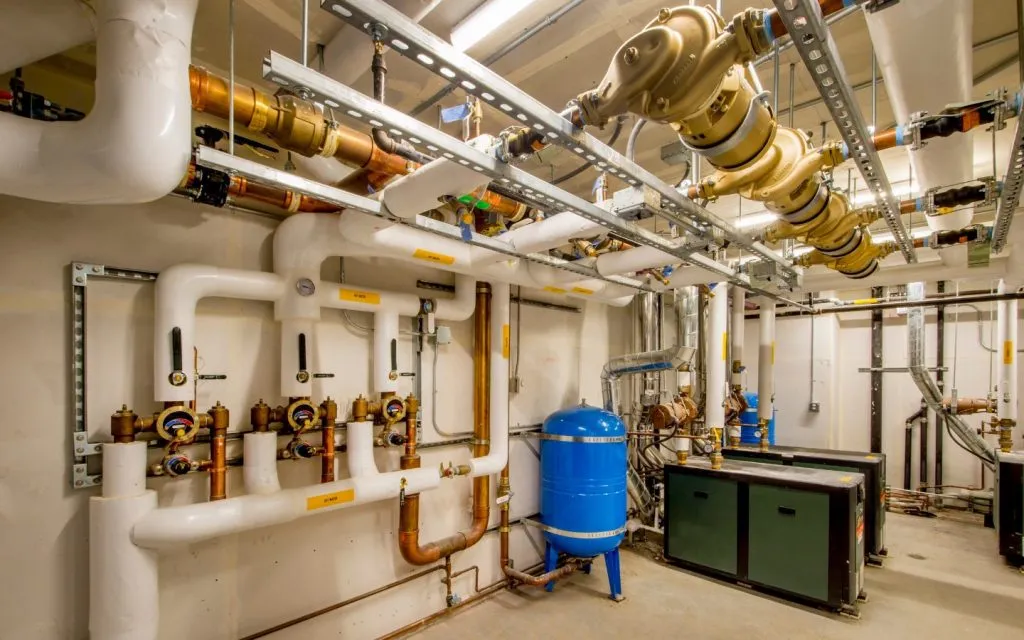Learning
The Main 2 Culprits Behind Northern Thailand’s Haze Problem

Residents in northern Thailand, Laos, and Myanmar’s Shan state have been suffering from the worst haze in years for the past two months. Thousands of people have gone to hospitals with respiratory difficulties, and workers in Chiang Mai, Thailand, which has just been named as one of the most polluting cities in the world, have been urged to stay indoors and work from home.
Out-of-control wildfires and the burning of ever-wider fields of maize stubble after the February harvest to clear land for planting season in May are the two main culprits behind the dangerous pollution, which is 16 times worse than healthy levels in certain locations.
The wildfires are being fueled by drier-than-usual conditions. Many are in difficult-to-reach places, and Thailand’s firefighting efforts are underfunded.
While farmers have cut vast swaths of farmland from the forest to plant corn, primarily for animal feed. Demand for meat is increasing, which means more demand for maize – and higher prices, driving farmers to sow, cultivate, and burn more maize.
“The situation is the culmination of many years of bad agricultural practise,” said Greenpeace food and ecology campaigner Rattanasiri Kittikongnapang. “This is the worst haze in more than 10 years.”
Corn farms are sprouting up all over the place. According to her, between 2015 and 2019, 1.7 million hectares of land were converted from forest to corn production.
Corn Farming in Northern Thailand
The Thai government declared a zero-burn policy in March, but it has yet to be implemented. Bangkok authorities are “hoping it will all go away on its own because they are getting ready for an election,” Rattanasiri said.
Achoo, a Thai farmer with maize fields in Chiang Rai province’s Doi Sa-Ngo hamlet, finds no problem with burning. “It’s normal. “You burn the rest of the harvest after you collect it,” she explained. “Everyone does this, and we have been doing it for years.”
But there are also economic dynamics at work here.
Previously, the majority of the villagers’ crops were vegetables, cassava, pineapple, and edible flowering plants. They have turned to maize in recent years, especially after one of the farmers became a middleman to deliver it to animal feed firms.
“We’re not required to do anything. “Even though we don’t have any money, we get seeds and fertiliser from this person,” Achoo explained. “After the harvest, he collects it from us and takes it to the city.”
The increasing number of so-called hot spots – locations where fires are burning or are likely to ignite – is linked to deforestation and the production of more maize for animal feed. According to Alliya Moun-Ob, an air pollution campaigner for Greenpeace Thailand, rising maize demand is directly related to the rise of the meat sector.
Corn Maize for Animal Feed
Thailand requires at least 8 million tonnes of maize for animal feed, but only generates roughly 5 million tonnes, according to government estimates. It follows that the remainder must be imported.
Thailand established cross-border contract agricultural programmes with farmers in Laos, Myanmar, and Cambodia two decades ago, allowing it to import maize at zero tariffs. According to Alliya, the region has seen an increase in open burning since then.
According to Alliya and other activists, Thailand’s Charoen Pokphand Group, or CP Group, the world’s largest animal feed producer, with an annual production of 27,650 metric tonnes, drives much of the demand for maize.
“The Thai government supports one particular company – CP Group – which is responsible for contract farming maize in the north and neighbouring countries,” Rattanasiri explained.
To persuade rice farmers to switch to corn, CP Group promised to provide interest-free financial assistance and to buy the product at a guaranteed price in a pilot programme announced in December by the Royal Initiative Discovery Institute, a palace project promoting sustainable agriculture in the countryside.
According to Alliya, many farmers “who don’t have any resources or capacity, also don’t have a choice” except to engage in contract maize cultivation. “What is missing in legal and policy-making mechanisms is the liability of industrial sectors linked to environmental impacts while gaining benefits from maize,” Alliya explained.
Increased demand for livestock feed
CP Group claims it is launching a program to trace and verify if its corn maize for feed production is grown in a sustainable manner, particularly in areas that have not been deforested and farms that do not burn the stubble.
A firm executive, Paisarn Kruawongvanich, stated that the company has “always prioritized building a sustainable food production chain while also mitigating transboundary haze pollution.”
Corn prices have risen due to increased demand for livestock feed. According to the US Department of Agriculture Foreign Agricultural Service grain and feed report, local maize prices were 26% higher in February than a year ago, “due to insufficient locally produced maize and uncertainty in the global maize trade.”
Aside from that, wildfires are raging out of control in many parts of the region this year, according to experts, due to the start of the dry season following the end of La Nina, which results in cooler and wetter conditions in parts of Asia due to low sea surface temperatures in the equatorial Pacific Ocean.

Wildfires Raging Out of Control
Air quality in Laos has remained “unhealthy” to “hazardous” for more than four weeks. According to IQAir, the PM2.5 concentration in the capital Vientiane was 150 on Friday, more than 11 times the WHO standard.
Residents in Laos that smoke was flowing from all directions, while experts blamed this year’s fires on open burning and meteorological fluctuations.
“There is little visibility. When we go outside, we must wear masks. My children are becoming ill and have itchy noses and eyes. “It’s like having a cold or flu,” a Vientiane resident told RFA earlier this month.
A doctor at a hospital in Vientiane said they were seeing “a lot of patients with respiratory problems.”
Residents in Tachileik, Myanmar’s Shan state, say that pollution has been affecting them since March 24, saying the haze had previously remained for a couple of days, but this time it was longer and deeper.
According to the ASEAN Specialized Meteorological Centre, or ASMC, El Nino – warmer ocean surface temperatures – brings drier, warmer weather and raises the risk of forest fires and smoke haze in Southeast Asia.
“There was also probably no controlled burning management to keep the forest healthy.” “If you don’t manage it properly, a small fire can quickly become huge and uncontrollable,” warned Prof. Ekbordin Winijkul, dean of the Asian Institute of Technology’s energy, environment, and climate change department.

Fires Purposely Set
Thai officials refused to reveal the alleged causes of the flames, despite the fact that numerous people have been arrested on suspicion of setting the wildfires.
According to activists, the motivations could be to destroy trees in order to construct new farmland or for mushroom hunting. The fire’s devastation provides a nutrient-rich environment suitable to the growth of fungi practically soon afterward, which farmers hunt to harvest and sell in the market.
Experts predict that if nothing is done to mitigate the smog, more people would die.
According to Mushtaq Memon, UNEP Coordinator of Chemicals and Pollution Action for Asia and the Pacific, air pollution was among the top 10 risk factors for death in all Southeast Asian countries in 2019, accounting for over half a million premature deaths.
“Immediate challenges in addressing open burning of crop residues include providing farmers with timely and sufficient resources,” he said.
According to Ekbordin, transboundary haze is “not a problem of one country or one company.”
“We must confront it as a group. If we do not take significant steps immediately, the situation will deteriorate,” he continued. “And it will continue to happen every year.”
Learning
First-Time Buyer’s Guide to the UK Property Market

Entering the UK property market as a first-time buyer can feel both exciting and daunting. The process is filled with potential pitfalls and complex decisions, but with the right guidance, it can be navigated smoothly. The estate agents in Yorkshire demystify the journey from the initial decision to buy a home to the moment you step over the threshold of your new property.
Understanding Your Financial Position
The first and perhaps most crucial step in the home-buying process is understanding your financial situation. This includes assessing your savings, income, and current debts. Here’s how you can prepare:
1. Deposit: Generally, you’ll need at least 5% of the property price as a deposit, though aiming for 10% or more can provide better mortgage rates.
2. Income and Expenses: Use a budget planner to assess your monthly income against your expenses. This will help you understand how much you can afford in monthly mortgage repayments.
3. Credit Score: Lenders will evaluate your credit score to determine your mortgage eligibility. So it’s important to have a good credit score, and you should work on it if required.
4. Mortgage Options: Speak to a mortgage advisor to understand different types of mortgages, such as fixed-rate, variable-rate, and help-to-buy schemes.
Getting a Mortgage Agreement in Principle
A Mortgage Agreement in Principle (AIP) is a statement from a lender indicating how much they’ll likely lend you. You will be a more attractive buyer with an AIP as it shows sellers you’re serious and financially prepared.
Deciding What You Want
Before you start viewing properties, it’s essential to know what you’re looking for. Consider the following factors:
1. Location: Proximity to work, schools, public transport, and amenities are key. Research neighbourhoods to find the best fit for your lifestyle.
2. Property Type: Decide whether you want a flat, terraced house, semi-detached, or detached property. Each has its pros and cons.
3. Must-Haves: Make a list of non-negotiables, such as the number of bedrooms, garden size, and parking facilities.
4. Future Proofing: Consider your future needs. Are you planning to start a family? Do you need space for a home office?
Starting the Property Search
With a clear idea of what you’re looking for, you can begin your property search. Here are some tips:
1. Use Online Portals: Websites like Rightmove, Zoopla, and OnTheMarket are excellent starting points. Set up alerts to get notified of new listings that meet your criteria.
2. Visit Estate Agents: Register with local estate agents who can provide insights into the market and inform you of new properties before they’re listed online.
3. Attend Viewings: Don’t rush this part. Visit several properties to get a feel for what’s available in your price range.
Making an Offer
Once you find a property you love, it’s time to make an offer. Here’s how to approach it:
1. Research: Check the selling prices of similar properties in the area to gauge a fair offer.
2. Negotiate: Don’t be afraid to negotiate. The starting point is most usually the asking price.
3. Conditions: You might include conditions in your offer, such as the inclusion of certain fixtures or a specific moving date.
The Legal Process
If your offer is accepted, the legal process begins. You’ll need a solicitor or licensed conveyancer to handle the legalities. Here’s what to expect:
1. Conveyancing: This is the legal transfer of property ownership. Your solicitor will handle this, including conducting searches, dealing with the Land Registry, and transferring the funds.
2. Surveys and Inspections: Arrange for a property survey to check for structural issues. There are different types of surveys, from basic condition reports to full structural surveys.
3. Mortgage Finalisation: Once the survey is complete and satisfactory, your mortgage can be finalised.
4. Exchange of Contracts: This is when the sale becomes legally binding. You’ll pay your deposit at this stage.
5. Completion: On the agreed completion date, the remaining money is transferred, and you receive the keys to your new home.
Moving In
Moving day can be hectic, but planning can ease the stress:
1. Hire a Removal Company: Book a reliable removal company well in advance. Discover the best deals by getting quotes from multiple companies.
2. Pack Strategically: Label your boxes by room and keep essential items accessible.
3. Notify Utilities and Change Address: Inform your utility providers of your move date and update your address with banks, the DVLA, and other important institutions.
Settling In
Get settled. Introduce yourself to the neighbours, familiarise yourself with the local area, and really start to make the place your own.
Here are a few final tips:
1. Safety Checks: Make sure that your smoke alarms and carbon monoxide detectors are working, and make sure that you know where the gas and electricity meters are located.
2. Maintenance Plan: Keep a record of the smooth functioning of your new home with a maintenance schedule, complete with regular checks and seasonal tasks.
3. Personal Touches: Add personal touches to make the space feel like home. This can be from putting up family photos or redoing the decoration in your rooms.
Conclusion
Buying your very first home in the UK is most definitely a milestone, difficult and full of challenges but rewarding in the end. Such a philosophy guides you in understanding finances and knowing what you want to achieve from detailed research, and seeking professional advice that confidently helps you navigate the property market. Yes, the journey may have its hurdles, but in the end—owning your own home—the reward will be worth the effort. Welcome to your new chapter!
SEE ALSO: Conquer the Chaos: Hacks to Clean Your Home in Half the Time
Learning
5 Health Benefits of Regular Pedicures

There’s nothing quite like a pedicure to keep your feet looking and feeling their best, but did you know that pedicures do more than simply enhance the appearance of your feet? Many people don’t realize that regular pedicures can come with a wide range of health benefits that can promote the well-being of your feet, so here are some ways that your routine pedicure keeps both your toenails and feet in the best condition possible!
Smoother Skin
One of the biggest misconceptions about pedicures is that they only cater to and look after your toenails. While you’ll definitely be leaving each session with a fresh coat of nail polish, your pedicure can also do wonders for the health of your skin. Aside from trimming and shaping your nails and cuticles, you’ll notice that your nail technician also dedicates a few steps to the skin of your feet.
After inspecting your feet and looking for any issues or imperfections that may need to be addressed, your technician will work on an exfoliating scrub to remove any dead skin cells. This step may also be aided by a foot file, which can be used to buff away any calluses and other problem areas manually.
Softer Skin
After your nail technician addresses all the problem areas of your feet and removes any unwanted dead skin cells, he or she will often massage in a moisturizing product, such as lotion, cream, or butter, to ensure that your skin is properly moisturized. These products contain skin-loving ingredients that will ensure that your feet have everything they need to look and feel their best so that you can walk out of your pedicure with a renewed sense of confidence.
Healthier Nails
After your pedicure session, your nails will not only look better due to the fresh coat of nail polish, but they’ll also be healthier and stronger. This is because your nail technician takes their time to ensure that your nails are properly looked after through steps that include deep cleaning, nail trimming, nail filing, and cuticle care. All of these things work together to prevent issues like ingrown nails from occurring, all the while improving the appearance of your nails.
Increased Blood Circulation
While the specific steps included in your pedicure will depend on the beauty salon, most pedicures will have a massage step somewhere in the mix. One of the often overlooked benefits of these massages is the increased blood circulation, which can deliver more nutrients and oxygen to your feet and nails, promoting their health and appearance. Aside from that, better blood flow means reduced tension and soreness, as well as better distributed heat throughout your body.
Reduced Infections
A significant amount of dirt and bacteria can build up on your feet without you even realizing it, but pedicures can be a great way to prevent these from happening in the first place. The exfoliation step of a pedicure removes dead skin cells as well as all the debris that may have accumulated underneath, and the deep cleaning of your toenails and cuticles also gets rid of any impurities that may have slipped beneath them, which can stop infections from happening.
These are some of the many health benefits that you can look forward to at your next pedicure appointment. However, it’s worth noting that you need to book regular sessions to truly reap all the rewards. This can be difficult, especially when you don’t feel like driving to your nearest nail salon after a long day, but the good news is that you can enjoy the salon experience in the comfort of your own home with a home pedicure service.
Learning
Commercial Boiler Installation Services London

For businesses in the bustling city of London, having a reliable heating system is crucial. Whether you’re opening a new office, expanding your current premises, or simply upgrading an outdated system, commercial boiler installation services for businesses in London are essential to ensure your operations run smoothly and efficiently. Proper installation and maintenance of commercial boilers can make a significant difference in energy efficiency, cost savings, and the overall comfort of your workspace.
The Importance of Professional Installation
When it comes to installing a commercial boiler, professional expertise is paramount. Here’s why:
- Efficiency and Performance: Professional installation ensures that your boiler operates at peak efficiency, reducing energy consumption and lowering utility bills. A well-installed boiler can effectively meet the heating demands of your business without unnecessary energy waste.
- Safety: Commercial boilers are complex systems that require precise installation to operate safely. Professional installers adhere to stringent safety standards and regulations, minimizing the risk of accidents and ensuring the safety of your employees and premises.
- Compliance with Regulations: Commercial properties are subject to various building codes and regulations. Professional installers are well-versed in these requirements and ensure that your boiler system complies with all local laws and standards.
- Longevity and Reliability: Proper installation is critical to the longevity and reliability of your boiler. A professional installation can prevent common issues such as leaks, pressure problems, and system failures, ensuring that your boiler runs smoothly for years to come.
Key Considerations for Commercial Boiler Installation
When planning for a commercial boiler installation, several factors need to be considered:
- Type of Boiler: The type of boiler you choose will depend on your business’s specific needs. Options include gas boilers, oil boilers, and electric boilers, each with its own set of advantages. Consulting with a professional can help you determine the best choice for your business.
- Sizing and Capacity: The boiler’s size and capacity must match the heating demands of your commercial space. An undersized boiler will struggle to meet your needs, while an oversized one will lead to inefficiencies and higher costs.
- Location: The placement of your boiler affects its efficiency and accessibility for maintenance. Professional installers can help you choose the optimal location for your boiler.
- Integration with Existing Systems: If you’re upgrading or replacing an existing boiler, it’s essential to ensure compatibility with your current heating system. Professional installers can seamlessly integrate the new boiler with your existing setup.
Choosing the Right Installation Service

Selecting the right installation service provider is crucial to the success of your boiler installation project. Consider the following when making your choice:
- Experience and Expertise: Look for a provider with a proven track record in commercial boiler installations. Experienced installers can handle the complexities of commercial systems and provide high-quality workmanship.
- Reputation: Check reviews and testimonials from previous clients to gauge the provider’s reliability and customer satisfaction.
- Comprehensive Services: Choose a provider that offers a full range of services, including installation, maintenance, and repair. This ensures that all your boiler needs are met by a single, trusted source.
In London, ROWLEN is a reputable name known for delivering top-notch commercial boiler installation services. Their team of experts is dedicated to providing efficient, safe, and compliant installations tailored to the unique needs of businesses.
Conclusion
Investing in professional commercial boiler installation services for businesses in London is essential for ensuring efficiency, safety, and long-term reliability. By choosing an experienced and reputable service provider like ROWLEN, you can rest assured that your heating system will be installed correctly and maintained to the highest standards. Proper installation not only enhances the performance of your boiler but also contributes to the overall comfort and productivity of your business environment.
SEE ALSO:
-

 News3 years ago
News3 years agoLet’s Know About Ultra High Net Worth Individual
-
Entertainment2 years ago
Mabelle Prior: The Voice of Hope, Resilience, and Diversity Inspiring Generations
-

 Health3 years ago
Health3 years agoHow Much Ivermectin Should You Take?
-

 Tech2 years ago
Tech2 years agoTop Forex Brokers of 2023: Reviews and Analysis for Successful Trading
-

 Lifestyles2 years ago
Lifestyles2 years agoAries Soulmate Signs
-

 Movies2 years ago
Movies2 years agoWhat Should I Do If Disney Plus Keeps Logging Me Out of TV?
-

 Health3 years ago
Health3 years agoCan I Buy Ivermectin Without A Prescription in the USA?
-

 Learning2 years ago
Learning2 years agoVirtual Numbers: What Are They For?


